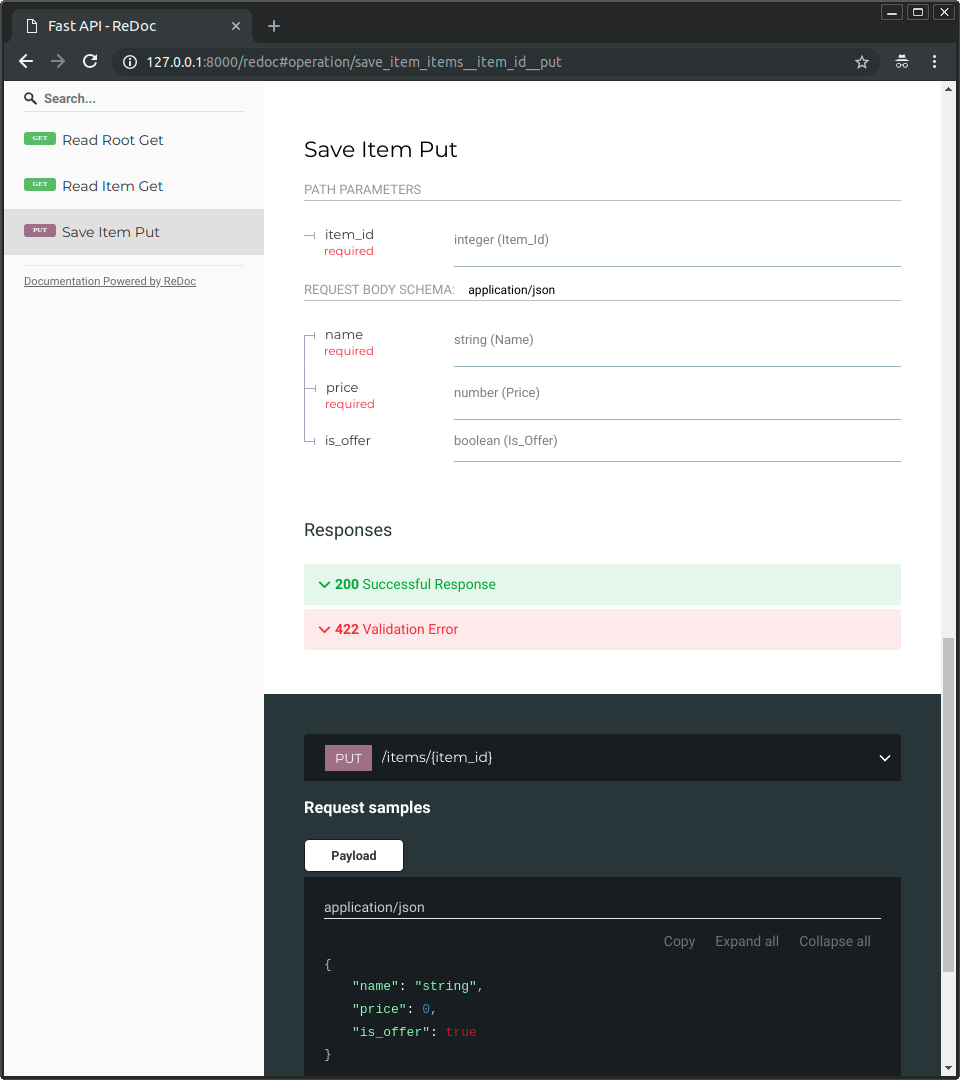- Sort Score
- Result 10 results
- Languages All
Results 221 - 230 of 645 for Pythons (0.03 sec)
-
docs/en/docs/advanced/events.md
A **context manager** in Python is something that you can use in a `with` statement, for example, `open()` can be used as a context manager: ```Python with open("file.txt") as file: file.read() ``` In recent versions of Python, there's also an **async context manager**. You would use it with `async with`: ```Python async with lifespan(app): await do_stuff() ```
Registered: Sun Dec 28 07:19:09 UTC 2025 - Last Modified: Wed Dec 17 20:41:43 UTC 2025 - 7.9K bytes - Viewed (0) -
docs/pt/docs/advanced/events.md
Um **gerenciador de contexto** em Python é algo que você pode usar em uma declaração `with`, por exemplo, `open()` pode ser usado como um gerenciador de contexto: ```Python with open("file.txt") as file: file.read() ``` Em versões mais recentes do Python, há também um **gerenciador de contexto assíncrono**. Você o usaria com `async with`: ```Python async with lifespan(app): await do_stuff() ```
Registered: Sun Dec 28 07:19:09 UTC 2025 - Last Modified: Wed Dec 17 20:41:43 UTC 2025 - 8.8K bytes - Viewed (0) -
docs/ru/docs/tutorial/body.md
Используйте стандартные типы Python для всех атрибутов: {* ../../docs_src/body/tutorial001_py310.py hl[5:9] *} Так же, как при объявлении параметров запроса: когда атрибут модели имеет значение по умолчанию, он не обязателен. Иначе он обязателен. Используйте `None`, чтобы сделать его просто необязательным. Например, модель выше описывает такой JSON "объект" (или Python `dict`): ```JSON { "name": "Foo",Registered: Sun Dec 28 07:19:09 UTC 2025 - Last Modified: Wed Dec 17 20:41:43 UTC 2025 - 11.6K bytes - Viewed (0) -
docs/ja/docs/features.md
 ### 現代的なPython FastAPIの機能はすべて、標準のPython 3.8型宣言に基づいています(Pydanticの功績)。新しい構文はありません。ただの現代的な標準のPythonです。 (FastAPIを使用しない場合でも)Pythonの型の使用方法について簡単な復習が必要な場合は、短いチュートリアル([Python Types](python-types.md){.internal-link target=_blank})を参照してください。 型を使用した標準的なPythonを記述します: ```Python from datetime import date from pydantic import BaseModelRegistered: Sun Dec 28 07:19:09 UTC 2025 - Last Modified: Sat Oct 11 17:48:49 UTC 2025 - 12.2K bytes - Viewed (0) -
docs/fr/docs/async.md
## `async` et `await` Les versions modernes de Python ont une manière très intuitive de définir le code asynchrone, tout en gardant une apparence de code "séquentiel" classique en laissant Python faire l'attente pour vous au bon moment. Pour une opération qui nécessite de l'attente avant de donner un résultat et qui supporte ces nouvelles fonctionnalités Python, vous pouvez l'utiliser comme tel : ```Python burgers = await get_burgers(2) ```
Registered: Sun Dec 28 07:19:09 UTC 2025 - Last Modified: Sun Aug 31 09:56:21 UTC 2025 - 25.4K bytes - Viewed (0) -
docs/tr/docs/tutorial/request-forms.md
/// info | Bilgi Formları kullanmak için öncelikle <a href="https://github.com/Kludex/python-multipart" class="external-link" target="_blank">`python-multipart`</a> paketini indirmeniz gerekmektedir. Örneğin `pip install python-multipart`. /// ## `Form` Sınıfını Projenize Dahil Edin `Form` sınıfını `fastapi`'den projenize dahil edin:
Registered: Sun Dec 28 07:19:09 UTC 2025 - Last Modified: Mon Nov 18 02:25:44 UTC 2024 - 3.1K bytes - Viewed (0) -
docs/zh/docs/tutorial/request-form-models.md
# 表单模型 您可以使用 **Pydantic 模型**在 FastAPI 中声明**表单字段**。 /// info 要使用表单,需预先安装 <a href="https://github.com/Kludex/python-multipart" class="external-link" target="_blank">`python-multipart`</a> 。 确保您创建、激活一个[虚拟环境](../virtual-environments.md){.internal-link target=_blank}后再安装。 ```console $ pip install python-multipart ``` /// /// note 自 FastAPI 版本 `0.113.0` 起支持此功能。🤓 /// ## 表单的 Pydantic 模型
Registered: Sun Dec 28 07:19:09 UTC 2025 - Last Modified: Tue Dec 10 20:36:08 UTC 2024 - 2.1K bytes - Viewed (0) -
docs/ja/docs/tutorial/path-params.md
# パスパラメータ Pythonのformat文字列と同様のシンタックスで「パスパラメータ」や「パス変数」を宣言できます: {* ../../docs_src/path_params/tutorial001.py hl[6,7] *} パスパラメータ `item_id` の値は、引数 `item_id` として関数に渡されます。 しがたって、この例を実行して <a href="http://127.0.0.1:8000/items/foo" class="external-link" target="_blank">http://127.0.0.1:8000/items/foo</a> にアクセスすると、次のレスポンスが表示されます。 ```JSON {"item_id":"foo"} ``` ## パスパラメータと型 標準のPythonの型アノテーションを使用して、関数内のパスパラメータの型を宣言できます:Registered: Sun Dec 28 07:19:09 UTC 2025 - Last Modified: Mon Nov 18 02:25:44 UTC 2024 - 10.4K bytes - Viewed (0) -
docs/pt/docs/tutorial/body-nested-models.md
Você pode definir um atributo como um subtipo. Por exemplo, uma `list` do Python: {* ../../docs_src/body_nested_models/tutorial001_py310.py hl[12] *} Isso fará com que tags seja uma lista de itens mesmo sem declarar o tipo dos elementos desta lista. ## Campos do tipo Lista com um parâmetro de tipo { #list-fields-with-type-parameter } Mas o Python tem uma maneira específica de declarar listas com tipos internos ou "parâmetros de tipo":Registered: Sun Dec 28 07:19:09 UTC 2025 - Last Modified: Wed Dec 17 20:41:43 UTC 2025 - 7.4K bytes - Viewed (0) -
docs/en/docs/tutorial/body.md
Use standard Python types for all the attributes: {* ../../docs_src/body/tutorial001_py310.py hl[5:9] *} The same as when declaring query parameters, when a model attribute has a default value, it is not required. Otherwise, it is required. Use `None` to make it just optional. For example, this model above declares a JSON "`object`" (or Python `dict`) like: ```JSON { "name": "Foo",Registered: Sun Dec 28 07:19:09 UTC 2025 - Last Modified: Sat Dec 20 15:55:38 UTC 2025 - 6.8K bytes - Viewed (0)